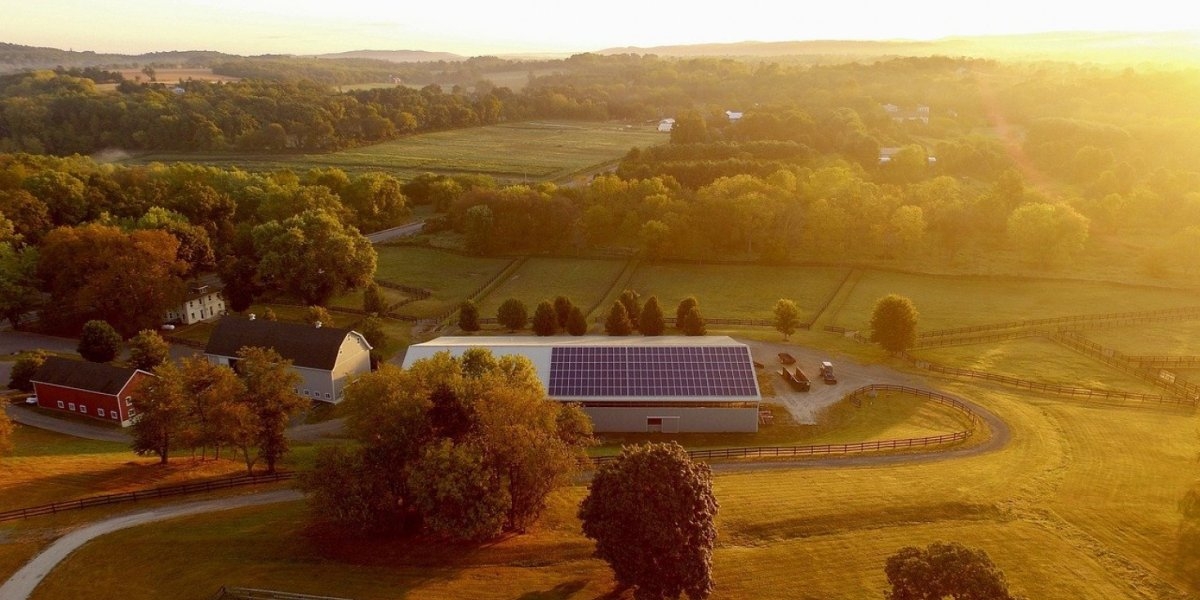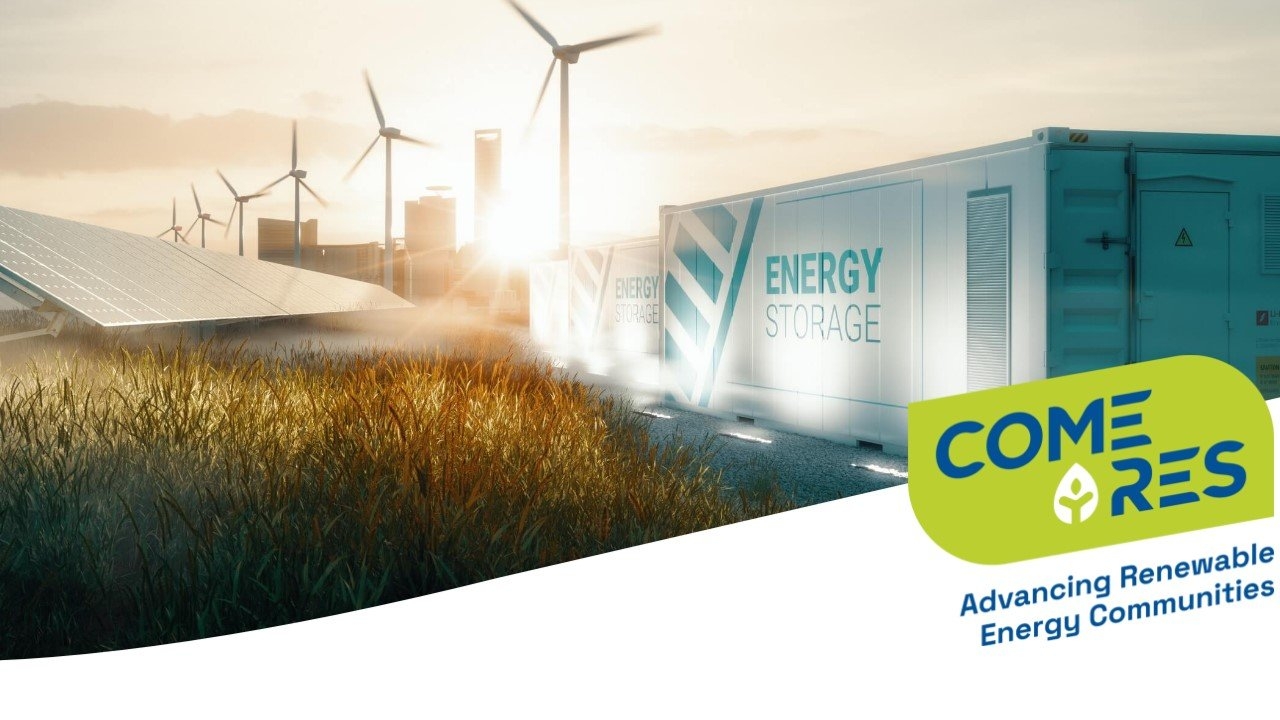COME RES - the development of clean energy communities in Norway
As part of a new EU-funded project, CICERO will study the conditions for community energy in Norway and Europe. Community energy has been identified by the EU as an important pathway to promote the energy transition towards a low-carbon society.
PHOTO BY D. CANNON FROM PIXABAY.
Project details
“The EU is currently focussing on renewable energy communities because it is believed that these can contribute to increasing public support for the development of renewable energy and thus help speed up the energy transition,” says Karina Standal. She is one of the CICERO researchers who are involved in the project, which goes under the name of COME RES.
In the EU’s recast Renewable Energy Directive, which entered into force in December 2018, it is stipulated that all EU and EEA member states “shall ensure that final costumers, in particular household customers, are entitled to participate in a renewable energy community”.
“In the COME RES project, we want to study whether local community-ownership of wind farms, solar panels, hydropower plants and batteries can contribute to increasing the social acceptability for the building of new renewable power production capacity,” Standal says.
Sixteen partners in nine European countries
Sixteen partners from nine European countries – Norway, Belgium, Germany, Latvia, Poland, Portugal, the Netherlands, and Spain – will work together in the project. They will cooperate with stakeholders from the energy sector and civil society in these countries to get their views and other information which will deepen their understanding of the development of renewable energy communities.
Two of the project partners are from Norway: CICERO and the Norwegian Water Resources and Energy Directorate (NVE).
“The COME RES project is funded by the EU’s research and innovation programme Horizon 2020, and the knowledge we will acquire through it will provide the European Commission with deeper insight into how the situation is in Norway and Europe,” says Standal.
Despite the expected positive effects both for the development of renewable energy, and for the social acceptance for clean energy, there are today few renewable energy communities in Europe. This project will explore the conditions for establishing community energy. This includes getting insight into policy frameworks and regulations, business models, social acceptance, as well as learning across the countries participating in the project.
In the COME RES project, we want to study whether local community-ownership of wind farms, solar panels, hydropower plants and batteries can contribute to increasing the social acceptability for the building of new renewable power production capacity.
What is a renewable energy community?
A renewable energy community is a legal entity where citizens, enterprises and local authorities come together and cooperate in the generation and supply of energy or offer energy efficiency/demand side management services.
The primary purpose of a renewable energy community is to provide environmental, economic, or social community benefits – rather than financial profits – for its members or shareholders.
“In Norway, we have a long tradition of local ownership of small-scale power plants, but because these tend to focus on making profits, they do not exactly fit with the EU’s definition of a renewable energy community,” Standal says.
Potential for renewable energy communities in Norway
There seems to be a big potential for the establishment of more renewable energy communities in Norway, according to Standal. Several island communities have wind power resources, and local plants could increase their energy security. Moreover, farms often have vast rooftop potential for solar energy.
“Imagine if solar panels were installed on the roofs of most Norwegian farmhouses, and that these could supply not just the farmhouses but also the local community with electricity? In addition to the financial benefits for the farmers of self-consumption and the sale of surplus electricity, this would contribute to making the agricultural industry more climate-friendly,” Standal says.
Several property developers and real estate companies have also expressed an interest in developing community energy involving households. But due to the current regulations and the cost of acquiring energy systems, it is today quite challenging for household consumers to go together to form an energy community.
Can reduce the need for grid expansion
According to Standal, it is believed that the establishment of more renewable energy communities could help increase the security of electricity supply because it could lead to more decentralised and local energy production.
This is especially relevant for island or remote communities where the existing power supply is sometimes unreliable. But it could also become of interest to housing cooperatives as more and more people switch to electric cars that need to be charged.
“These are some of the issues we are going to study over the next couple of years as part of the COME RES project. To do this, we will need help from different actors in the energy industry and civil society who can provide us with their insights. The participation of the stakeholders in the national reference group we have created for this project is therefore very important,” says Standal.
Imagine if solar panels were installed on the roofs of most Norwegian farmhouses, and that these could supply not just the farmhouses but also the local community with electricity? In addition to the financial benefits for the farmers of self-consumption and the sale of surplus electricity, this would contribute to making the agricultural industry more climate-friendly.
Follow-up to the WinWind Project
The COME RES project is a follow-up to the WinWind Project, which ended in spring 2020, and many of the partners in the two projects are the same.
One of the main findings of the WinWind project was that a major determinant of people’s attitudes towards wind power are often what the wind power is to be used for and who owns it. The project found that social acceptance for wind power tends to increase if the turbines are locally owned, and if the planning process is seen as fair and transparent.
Moreover, the project also found that people who live in communities where wind power is built often show more positive attitudes towards wind power development if they perceive to be benefiting from it, such as in the form of increased tax incomes to their local municipality or the creation of new jobs in their district.
“Many of these findings are also important for us when we now explore the conditions for community energy in Norway and the other countries that are part of the COME RES project,” says Standal.
Facts about the COME RES project:
Full name of project: COME RES – Community Energy for the Uptake of RES in the Electricity Sector. Connecting Long-Term Visions with Short-Term Actions.
Duration and founding: The COME RES project is led by Freie Universität Berlin and is funded by the EU’s research and innovation programme Horizon 2020. The project will run for 2.5 years, from 1 September 2020 and until 28 February 2023.
Aim of the project: The COME RES project aims to facilitate the market uptake of renewable energy in the electricity sector by supporting the development of renewable energy communities in the nine European countries in which its members are based. These countries range from being pioneers that have gained broad experience in community energy, to beginners that have only recently started developing an interest in this kind of ownership of renewable energy.
Covering both different renewable energy technologies, such as solar and onshore wind power, and storage systems, COME RES will analyse the legal, socioeconomic, spatial and environmental characteristics of renewable energy communities, and the reasons for their slow deployment in the selected target regions. The project will identify the barriers and drivers for the establishment of renewable energy communities in these countries and develop recommendations for how to increase the number of renewable energy communities in Europe.
Sixteen project partners in nine European countries: Sixteen partners from nine European countries are working together in the COME RES project. These are:
- Belgium: Flemish Institute for Technological Research (VITO), REScoop.eu – the European federation of citizen energy cooperatives
- Germany: Freie Universität Berlin (project leader), Becker Büttner Held law firm, ICLEI – Local Governments for Sustainability (a network of local and regional governments committed to sustainable development)
- Italy: Italian National Agency for New Technologies, Energy and Sustainable Economic Development (ENEA), consultancy company Ecoazioni
- Latvia: Institute of Physical Energetics (FEI), the Latvian Environmental Investment Fund
- The Netherlands: Eindhoven University of Technology
- Norway: CICERO Center for International Climate Research, the Norwegian Water Resources and Energy Directorate (NVE)
- Poland: The Polish National Energy Conservation Agency (KAPE)
- Portugal: INEGI – Institute of Science and Innovation in Mechanical and Industrial Engineering
- Spain: Consultancy company ECORYS, renewable industry association Asociación Canaria de Energías Renovables (ACER)
More information: For more information about the COME RES project, please see the project description on the European Commission Website.

